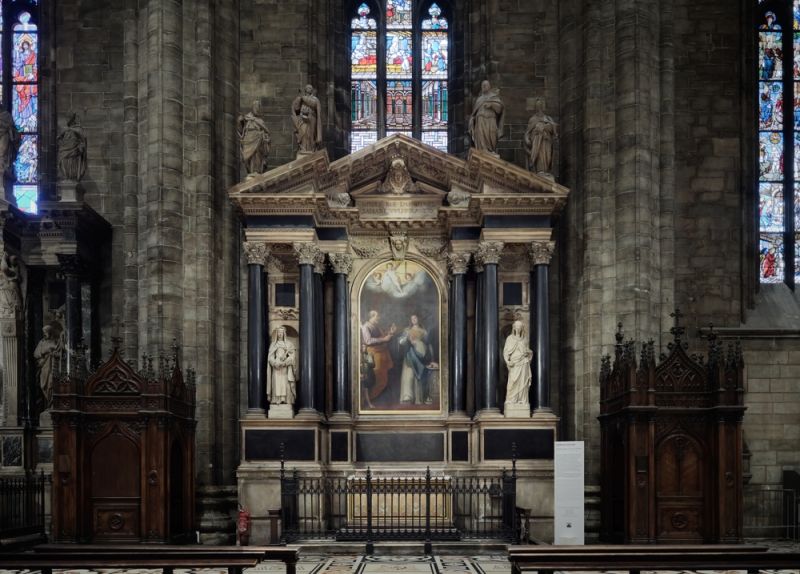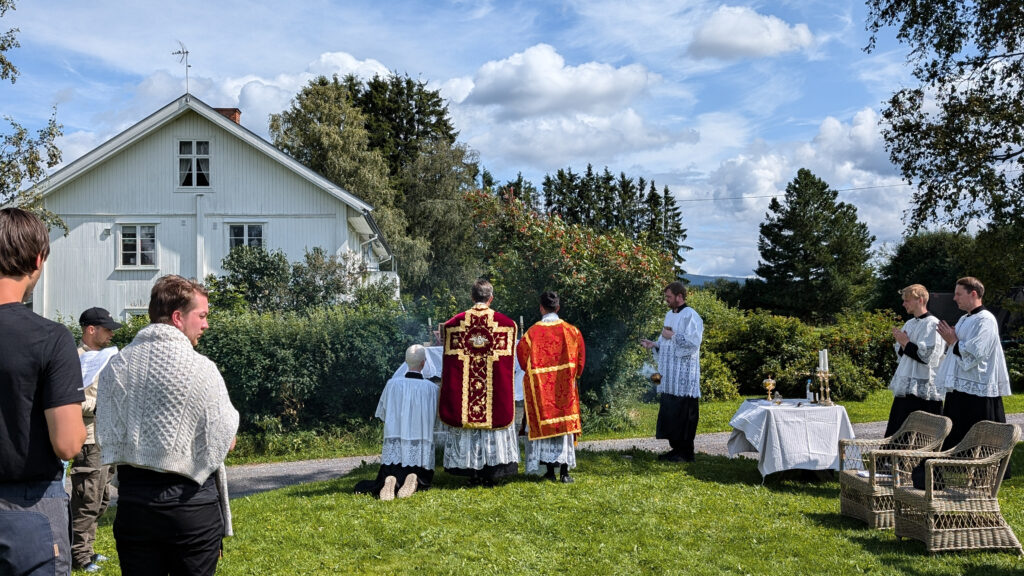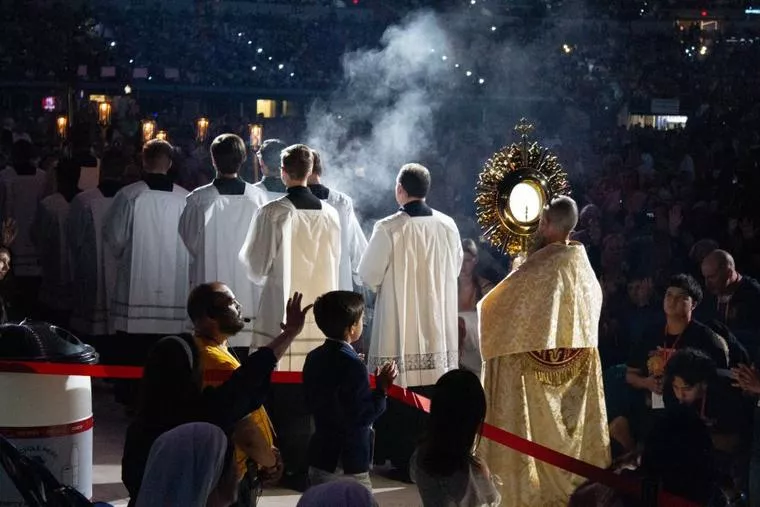Milan, Italy, Jun 29, 2023 / 01:00 am (CNA).
Within the splendor of Milan’s cathedral, a unique image from the late 16th century hangs over one of the side altars of the south aisle of the nave.
Created by Federico Zuccari between 1597 and 1599 for the altar of Sant’Agata, it was commissioned by Milan native Federico Borromeo, a cousin to St. Charles Borromeo, the saint and champion of the Counter-Reformation and hero of the plague.
The painting is unique because it depicts a Christian legend that, today, is not particularly well known.
The basic outlines of the story of St. Agatha are familiar, largely due to the fact that they are so gruesome one can hardly forget them.
Agatha, a young virgin from Sicily, had pledged herself to Christ when a Roman Senator Quintianus became enamored by her beauty. She refused his advances, protesting that she already belonged to God, and this infuriated him. The governor turned her over to various tortures, one of which is memorialized in the iconography of the virgin: he had her breasts cut off.
This horrific torment led to her becoming a patroness of women everywhere, but especially of breast cancer sufferers and nurses. It also brought about the tradition of peculiar breast-shaped sweets being popular on her Feb. 5 feast day.
Agatha is a much-beloved saint, especially in Italy, Malta, and other places, and is one of the female martyrs mentioned in the Roman Canon. Her death is believed to have occurred during the persecution of Decius, from 250 to 253.
But a lesser-known element of her legend involves St. Peter.
According to the story, once Quintianus’ minions had severed her breasts and left her in agony in prison, St. Peter and an angel appeared to her. The first pope healed the young virgin’s wounds and reaffirmed her in her zeal.
The healing did nothing to shock or shame Quintianus into changing his mind, and he had Agatha dragged through the streets of the city until her triumphant death finally brought an end to her suffering.
It is this visit from Peter and the angel that is depicted at her altar in Milan’s cathedral, the Duomo. The painting shows a childlike Agatha looking upward, where three cherubs hover in bright light, contrasting with the darkness of her cell. Her left hand lies over a silver tray containing her severed breasts. With her right hand, she points up and her bloodied chest stains her garments. An older, bearded Peter offers her a cup, with the angel standing in the foreground, as if keeping guard against the night watchmen.
This painting of St. Peter visiting St. Agatha was created by Federico Zuccari between 1597 and 1599 for the altar of Sant’Agata in the Milan Cathedral. It was directly commissioned by Milan native Federico Borromeo, a cousin of St. Charles Borromeo. Photo by Rachel Thomas
The narrative is clear, in line with Federico Borromeo’s desire to use art as a way to promote the devotion of the faithful and their understanding of the stories of salvation.
Which is why June 29, the feast of Sts. Peter and Paul, is a good day to consider this legend and this masterpiece.
St. Peter was himself martyred some 200 years before Agatha and is shown here to the faithful as a source of comfort and the bearer of God’s healing for the suffering young Christian. As the first of Christ’s vicars, he is an image of the whole Church and thus comes to offer both fatherly and motherly consolation to the agonizing Agatha.
Peter’s 266th successor, Pope Francis, invites us to feel something of what Agatha must have felt at seeing Peter come to her in prison.
“Let us ask ourselves if, deep in our hearts,” the pope said in last year’s Feb. 16 general audience, “we love the Church as she is … all the goodness and holiness that are present in the Church, starting precisely with Jesus and Mary. Loving the Church, safeguarding the Church, and walking with the Church.”
St. Peter naturally calls to mind the pope’s teaching role and how the magisterium is the source of unity for the Church; but it also reminds us that he is, as the Catechism of the Catholic Church points out, the “shepherd of the whole flock” (No. 881) and “pastor of the entire Church” (No. 882). In other words, his teaching office is meant to be combined — as it was in Christ — with the fatherly, caring role of one who accompanies, especially in suffering.
Pope Francis often emphasizes the importance of this role. In speaking of priestly identity, he urges pastors to be close to their sheep, accompanying them both with prayer and presence in the realities they face.
“I am convinced that, for a renewed understanding of the identity of the priesthood, it is important nowadays to be closely involved in people’s real lives, to live alongside them, without escape routes,” he said in a Feb. 17 address at a symposium on the priesthood.
Certainly, Peter’s presence beside Agatha in prison gives us a vision of just such an accompaniment.
As we celebrate the feast of Sts. Peter and Paul, let us allow our hearts to fill with gratitude for the splendor of the Church’s art and history; for the many saints who are our friends in heaven; for the Church herself, our mother; and for Peter’s successors down through the ages, bringing us Christ’s comfort and closeness.
This story was originally published June 22, 2022, and was updated June 28, 2023.




